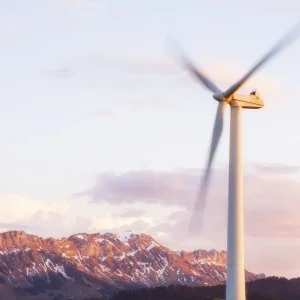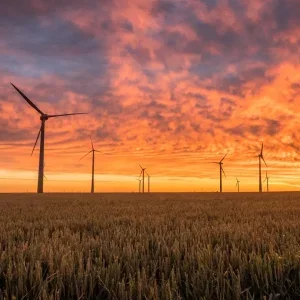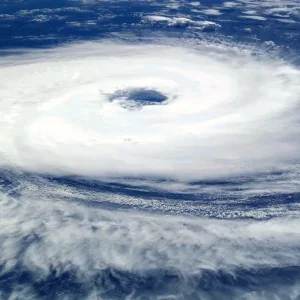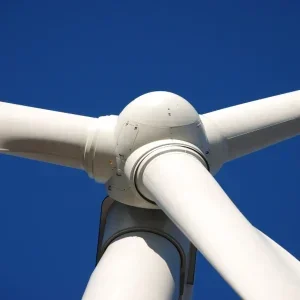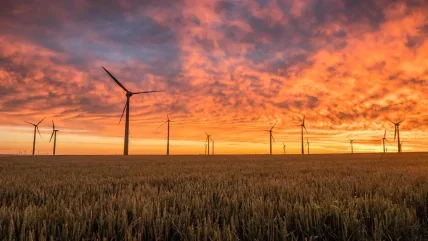
The wind energy industry, a critical component of the global transition to renewable energy, faces unique challenges during economic downturns. This article explores the multifaceted impacts of economic recessions on the wind energy sector, examining historical precedents, current challenges, and strategic responses.
The Economic Landscape of Wind Energy
Capital-Intensive Projects
Wind energy projects are highly capital-intensive, requiring substantial upfront investment for the development, construction, and installation of wind turbines. These projects also involve significant operational and maintenance costs over their lifespan. As such, the financial health of the broader economy plays a crucial role in the viability and expansion of wind energy initiatives.
Long-Term Investment Horizon
Wind energy projects typically have long development timelines, from initial planning and site assessment to construction and grid integration. This long-term investment horizon necessitates a stable economic environment to ensure continuous funding and project completion. Economic downturns, characterised by market volatility and financial uncertainty, can disrupt these timelines and threaten the economic feasibility of wind energy projects.
Historical Context: Economic Downturns and Wind Energy
The 2008 Financial Crisis
The 2008 financial crisis provides a valuable case study for understanding the impact of economic downturns on the wind energy industry. The global recession led to a sharp decline in investment in renewable energy projects, including wind energy. Many projects were delayed or cancelled due to tightened credit markets and reduced availability of capital. Governments and financial institutions, facing financial strain, were less able to provide the necessary funding and incentives for renewable energy projects. Despite these challenges, some countries, like China, continued to invest heavily in wind energy, recognising its long-term benefits for energy security and environmental sustainability.
Oil Price Shocks and Renewable Energy Investment
Historically, fluctuations in oil prices have also impacted investment in renewable energy. During periods of low oil prices, the economic incentive to invest in alternative energy sources like wind diminishes. Conversely, high oil prices often spur investment in renewables as countries seek to reduce their dependence on imported fossil fuels. The relationship between oil prices and renewable energy investment underscores the complex dynamics of energy markets during economic fluctuations.
Current Challenges in the Wind Energy Industry
Reduced Energy Demand
Economic downturns typically lead to a reduction in industrial activity and energy consumption. The COVID-19 pandemic, for example, resulted in a significant decline in global energy demand due to lockdowns and reduced economic activity. For the wind energy sector, this translates into lower electricity sales and reduced revenue for wind farm operators, potentially impacting their financial stability.
Financing Constraints
During economic downturns, securing financing for large-scale projects becomes more challenging. Banks and financial institutions become more risk-averse, tightening lending criteria and increasing the cost of capital. This can delay or derail planned wind energy projects. The uncertainty in financial markets also affects investor confidence, making it difficult to attract the necessary investment for new wind farms.
Supply Chain Disruptions
Economic downturns can lead to disruptions in global supply chains, affecting the availability and cost of components critical for wind turbine production. The COVID-19 pandemic, for instance, caused significant supply chain disruptions, delaying the delivery of key components and increasing costs. Such disruptions can hinder the timely completion of wind energy projects and escalate overall project costs.
Strategies for Mitigating Economic Downturn Impacts
Diversification of Funding Sources
To mitigate the risks associated with economic downturns, the wind energy industry can diversify its funding sources. This includes seeking investments from sovereign wealth funds, pension funds, and international financial institutions. Diversifying funding sources can reduce dependency on any single financial market and provide more stable financial backing for wind energy projects.
Government Support and Policy Measures
Government support is crucial in sustaining the wind energy industry during economic downturns. This can take the form of direct subsidies, loan guarantees, and favourable regulatory frameworks. Governments can also play a pivotal role in ensuring a stable policy environment that encourages long-term investments in wind energy. For instance, the European Union has implemented various measures to support its renewable energy targets, including specific funding programmes and policy incentives for wind energy.
Investment in Technological Innovations
Investing in technological innovations can enhance the economic resilience of the wind energy sector. Advancements in turbine design, materials, and manufacturing processes can reduce costs and improve efficiency. Moreover, innovations in energy storage and grid integration can help mitigate the variability of wind power, making it a more reliable energy source. By reducing costs and improving performance, technological innovations can make wind energy more competitive and attractive to investors even during economic downturns.
Enhancing Operational Efficiency
Improving the operational efficiency of existing wind farms can help mitigate the financial impact of reduced energy demand during economic downturns. This includes implementing advanced maintenance practices, adopting digital technologies for monitoring and optimisation, and improving grid integration. Enhancing efficiency can reduce operational costs and improve the economic viability of wind energy projects.
The Role of International Cooperation
Collaborative Research and Development
International cooperation in research and development (R&D) can play a significant role in mitigating the impacts of economic downturns. Collaborative R&D efforts can pool resources and expertise, reducing the financial burden on individual countries and organisations. Initiatives such as the International Energy Agency’s Wind Technology Collaboration Programme (IEA Wind TCP) exemplify how international cooperation can advance wind energy technology development even in challenging economic times.
Policy Harmonisation
Harmonising policies across borders can facilitate the development and deployment of wind energy projects. International agreements and standards can streamline regulatory processes, reduce administrative barriers, and promote cross-border investment. For example, the European Union’s Renewable Energy Directive provides a framework for member states to coordinate their renewable energy policies, including wind energy, enhancing market stability and investment security.
Emergency Response and Resilience Planning
International cooperation is also vital in establishing robust emergency response protocols and resilience planning. Economic downturns can strain national resources, making it challenging to maintain high standards of operation and safety independently. Collaborative efforts through organisations like the World Energy Council (WEC) ensure that best practices are shared and implemented globally, maintaining high standards despite economic pressures.
Case Studies
United States: Federal and State Support During Economic Downturns
In the United States, the wind energy industry has benefitted from both federal and state-level support during economic downturns. The Production Tax Credit (PTC) has been a key policy instrument, providing financial incentives for wind energy development. During the 2008 financial crisis, the American Recovery and Reinvestment Act (ARRA) included significant funding for renewable energy projects, including wind energy, helping to sustain the industry during the recession.
Germany: Sustaining the Energiewende
Germany’s Energiewende (energy transition) policy has made wind energy a central component of the country’s renewable energy strategy. During economic downturns, the German government has maintained strong support for renewable energy through feed-in tariffs, subsidies, and investment in grid infrastructure. This consistent policy support has helped Germany sustain its wind energy industry even during challenging economic periods.
China: Strategic Investment in Wind Energy
China has emerged as a global leader in wind energy, driven by strategic government investment and support. During the 2008 financial crisis, China continued to invest heavily in renewable energy infrastructure, recognising the long-term benefits for energy security and economic growth. The Chinese government’s proactive approach has enabled the country to become the world’s largest producer of wind power.
Future Outlook: Navigating Economic Uncertainty
Resilience Through Innovation
The future of the wind energy industry amid economic uncertainty will depend on its ability to innovate and adapt. Technological advancements, digital transformation, and enhanced operational practices will be key to building resilience. Embracing innovation can help the industry navigate economic downturns and emerge stronger.
Policy and Regulatory Evolution
Evolving policy and regulatory frameworks will play a critical role in supporting the wind energy sector during economic downturns. Governments and international bodies must continuously assess and adapt policies to address emerging challenges and opportunities. This includes creating conducive environments for investment, streamlining regulatory processes, and providing financial support mechanisms.
Public Perception and Social Licence
Public perception and social licence to operate are crucial factors influencing the future of wind energy. During economic downturns, there may be increased public scrutiny on government spending and industrial projects. The wind energy industry must engage transparently with stakeholders, demonstrating its value in terms of energy security, environmental benefits, and economic contribution.
Conclusion
Economic downturns present significant challenges to the wind energy industry, impacting financing, investment, and operational efficiency. However, through strategic measures such as diversifying funding sources, investing in technological innovations, and enhancing international cooperation, the industry can build resilience against economic uncertainties. The future of wind energy lies in its ability to adapt, innovate, and maintain robust operational and safety standards, ensuring its continued role as a vital component of the global energy transition. As the world navigates economic cycles, the wind energy sector must remain vigilant and proactive in addressing the multifaceted impacts of economic downturns.


